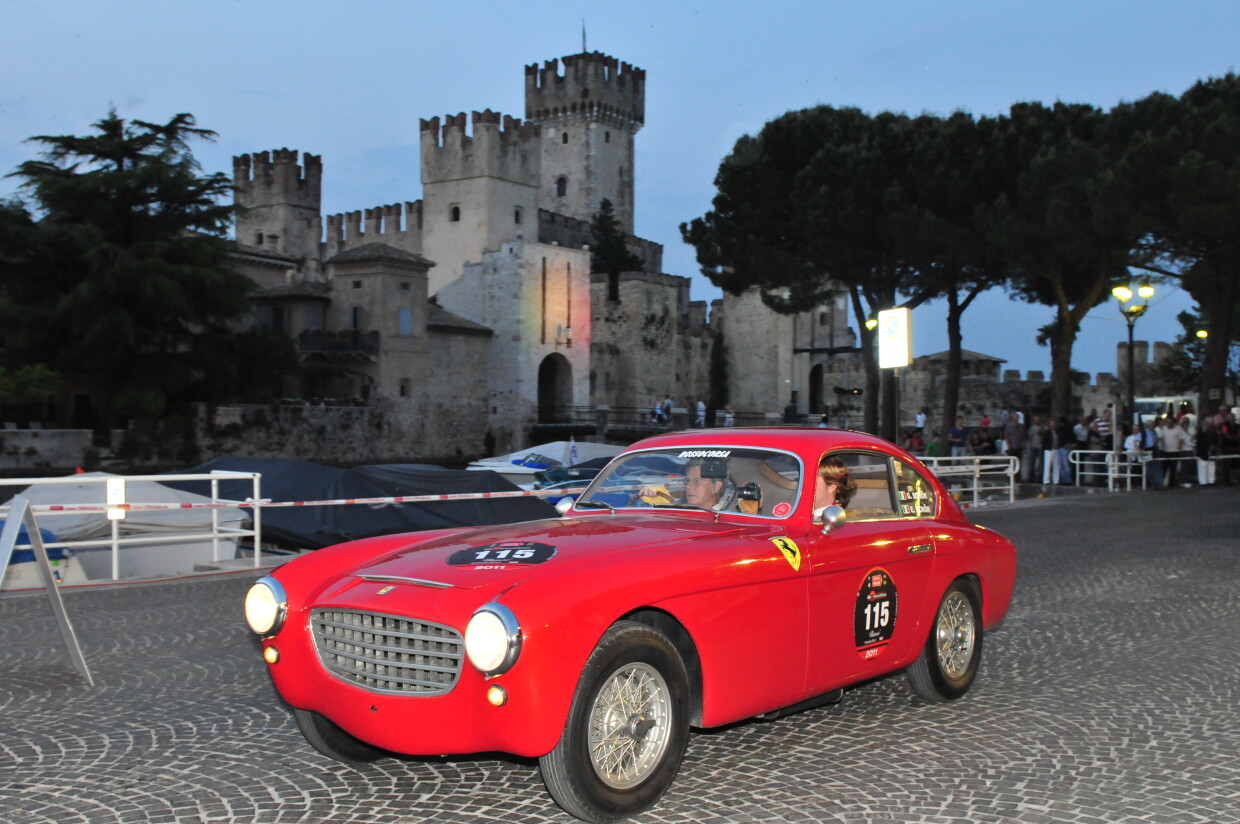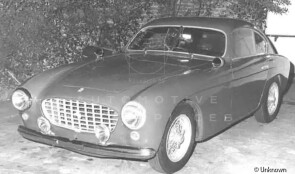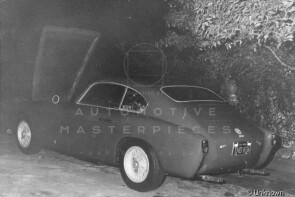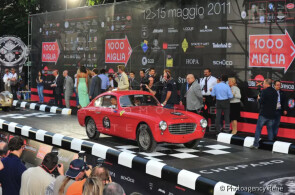
1949 Ferrari 166 Inter Coupé
ON/OFF
Why am I an Automotive Masterpiece?
L. Limited edition cars
no. 6 manufactured
1948 is considered the first true racing season for Ferrari, marked by the debut of the 2-liter version of the 12-cylinder engine, destined for a new model to be used both in the sports category and in Formula Two. It was the beginning of a successful and long-lasting series of cars, the "Tipo 166", which ensured Ferrari's prestige thanks to the first significant international successes. Designed to compete in the 2-liter class, it was an evolution of the 159 S, which in turn was a direct evolution of the first 125, and it debuted as a winner, achieving major successes that year. The 166’s chassis and suspensions had minor changes compared to previous models; it was a dedicated tubular structure designed by Ferrari and produced by Gilco. The car’s engine was the well-tested V12 designed by Gioacchino Colombo, brought to 1995.02 cc to reach the limit of the 2-liter class. Thanks to its 140 hp, it was favored by many gentlemen drivers of the time, while its flexibility and robustness allowed the 166 to be used competitively in any kind of race. As per Ferrari’s use, the car’s name corresponded to the displacement of the single cylinders. In 1953, the 166's built for competition were upgraded with a 9.5:1 compression ratio, individual intakes with three Weber 32 IF/4C carburetors, a new gearbox with synchronized 3rd and 4th gears, and twin fuel pumps. This allowed the 166/53 to produce 160 hp and to stay competitive in the 2-liter class. However, despite these improvements, the successes were limited due to the more competitive Maseratis.
The 166 Inter was Ferrari's first true gran turismo. An evolution of the 125 S and 166 S racing cars, it was “a sports car for the street.” The “Inter” name commemorated the victories claimed in 166 S models by Scuderia Inter. Presented on September 15, 1948, at the Salone dell’Automobile in Torino, together with its racing counterpart, the 166 Mille Miglia (barchetta), the Inter (coupé) was produced up to 1950, with the series comprising 37 examples, which carried chassis numbers in the odd-number Ferrari road-car sequence between 007 S and 0079 S. Like all 166s, it sat on the dedicated Gilco chassis, sharing at first the 2420 mm wheelbase of the 166 S, later grown to 2500 mm. It also shared the 2-liter version of Colombo’s V12 engine, while the output grew thanks to a new inlet with three carburetors. The 166 Inter was an elegant coupe designed by Carrozzeria Touring in Milan, built with the Superleggera system. Customer sales soon started, with the model becoming the first Ferrari to be purchased for the road rather than the racetrack. While many customers chose Touring to dress the bare chassis, Ghia's one-off Boano coupe was more daring. Others were built by Stabilimenti Farina. Vignale also joined in, presaging their designs of the coming decade, and two cabriolets created by Pinin Farina and Bertone foreshadowed those companies' later involvement with Ferrari.
This is the first of only six Ferrari 166 Inter Coupé Vignale bodied. All Vignale Ferrari's consist of very many body-panels that form themselves to the Ferrari-chassis that is underneath it. Almost all designs originate from Giovanni Michelotti and were built in aluminium. The designer Michelotti worked closely with Alfredo Vignale, one of the newest coachbuilders in Turin; the pair had worked together at Stabilimenti Farina. The car has had an adventurous life mechanically. The original engine (0059S), in fact, was replaced, when the car was imported into the USA, with a Chevrolet V8 block. It later ran out of engine and another engine (0083S) was offered to the then owner of the original engine for an exchange. In this way the car regained its original engine, returning to Italy.





